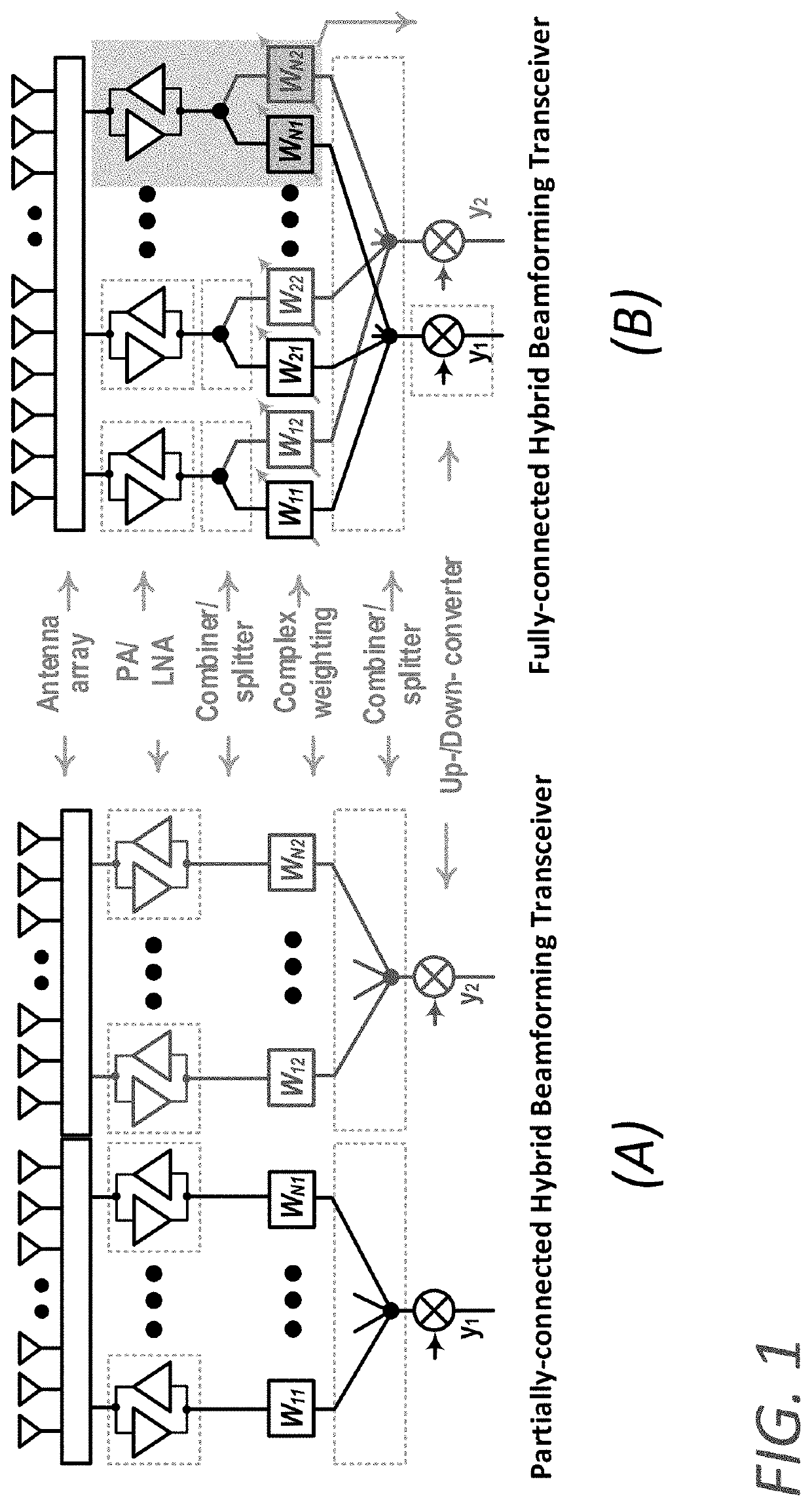Reconfigurable, bi-directional, multi-band front end for a hybrid beamforming transceiver
a transceiver and hybrid technology, applied in diversity/multi-antenna systems, particular array feeding systems, high-level techniques, etc., can solve the problem of not being able to achieve sonic in a pc-hbf, and achieve the effect of reducing the die area
- Summary
- Abstract
- Description
- Claims
- Application Information
AI Technical Summary
Benefits of technology
Problems solved by technology
Method used
Image
Examples
Embodiment Construction
[0029]Described herein is a 28 / 39 GHz front-end applicable to beyond-5G wireless networks. Note that, while the invention is being explained in terms of an implementation using 28 / 39 GHz, it should be realized by one of skill in the art the scope of the invention is intended to include any two mm-wave bands.
[0030]The front-end described herein features three novel aspects. First, a fully-connected (FC) transmitter architecture is introduced for hybrid beamforming (HBF). The power efficiency of FC-HBF is superior to the conventional partially-connected (PC) HBF for a given modulation and antenna geometry. Second, a compact / low-cost circuit concept is introduced that supports bi-directional T / R operation concurrently at two mm-wave bands, thereby facilitating multi-antenna carrier-aggregation (CA) or MIMO TDD with high antenna count. Third, a built-in mechanism for dual-band, per antenna, self-interference cancellation (SIC) is introduced, made possible by the FC-HBF architecture. The...
PUM
 Login to View More
Login to View More Abstract
Description
Claims
Application Information
 Login to View More
Login to View More - R&D
- Intellectual Property
- Life Sciences
- Materials
- Tech Scout
- Unparalleled Data Quality
- Higher Quality Content
- 60% Fewer Hallucinations
Browse by: Latest US Patents, China's latest patents, Technical Efficacy Thesaurus, Application Domain, Technology Topic, Popular Technical Reports.
© 2025 PatSnap. All rights reserved.Legal|Privacy policy|Modern Slavery Act Transparency Statement|Sitemap|About US| Contact US: help@patsnap.com



